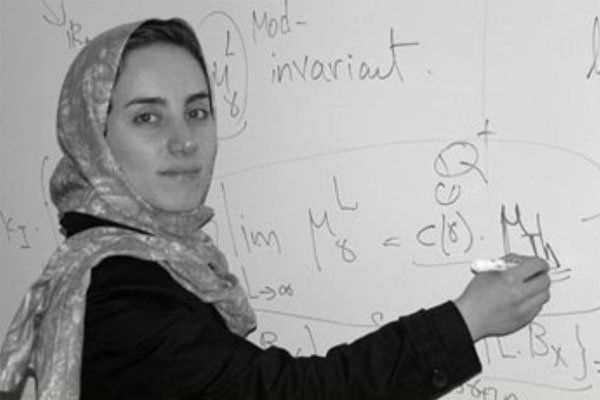Iranian Mathematician Maryam Mirzakhani Receives 2013 AMS Satter Prize

Iranian math scientist Maryam Mirzakhani has received the 2013 biennial Satter Prize in mathematics presented by American Mathematical Society.
The Satter Prize is dedicated to a woman to recognize and appreciate the winner’s mathematical accomplishments. This prize was established in 1990 using funds donated by Joan S Birman in memory of her sister, Ruth Lyttle Satter. Professor Birman requested that the prize be established to honour her sister’s commitment to research and to encouraging women in science. The US$5,000 prize is awarded every two years to recognize an outstanding contribution to mathematics research by a woman in the previous six years.
Born in 1977 in Tehran, Mirzakhani grew up in the Iranian capital and she is an alumna of Iran’s National Organisation for Development of Exceptional Talents (NODET) Tehran, Iran (Farzanegan highschool).
Mirzakhani obtained her BSc in Mathematics from the country’s prestigious university, Sharif University of Technology, in 1999. She holds a PhD from Harvard University (2004), where she worked under the supervision of the Fields Medallist, Curtis McMullen. She was a Clay Mathematics Institute Research Fellow and an assistant professor at Princeton University.
She became full professor of Mathematics at the age of 31 in 2008 at Stanford University where she is currently working. Her research interests mainly include hyperbolic geometry, Teichmuller theory, ergodic theory, and symplectic geometry.
Citation
Maryam Mirzakhani
The 2013 Ruth Lyttle Satter Prize in Mathematics is awarded to Maryam Mirzakhani for her deep contributions to the theory of moduli spaces of Riemann surfaces.
Her earliest work, the topic of her thesis, was a volume formula for the moduli space of bordered Riemann surfaces of genus g with n geodesic boundary components, a formula that expresses this volume as a polynomial in the lengths of the boundary components. That there exists a formula of this nature was itself surprising, but more surprising were the results she was able to extract from it: a new proof of the celebrated conjecture of Witten on the intersection numbers of tautology classes on moduli space and, in a completely different direction, an asymptotic formula for the lengths of simple closed geodesics on a compact hyperbolic surface.
Much of her work subsequent to this has focused on the Teichmuller dynamics of moduli space. In particular, she was able to construct a measure-preserving conjugacy between Thurston’s earthquake flow on Teichmuller space and horocycle flow on the associated space of quadratic differentials and as an immediate and long sought-after consequence of this to prove that earthquake flow is ergodic. In another vein, her recent work with Eskin establishes striking analogues for the Teichmuller flow and the mapping class group of Selberg’s classical “Prime Geodesic Theorem” for the modular surface and the modular group. Moreover, in a work in progress, they have unearthed some unexpected and intriguing analogues, in this Teichmuller setting, of the Ratner unipotent rigidity theorems in homogeneous dynamics.
[This article was originally appeared in the Asia Pacific Mathematics Newsletter, Volume 3 No. 3 (July 2013), published by World Scientific. It has been republished here with a special permission from World Scientific.]